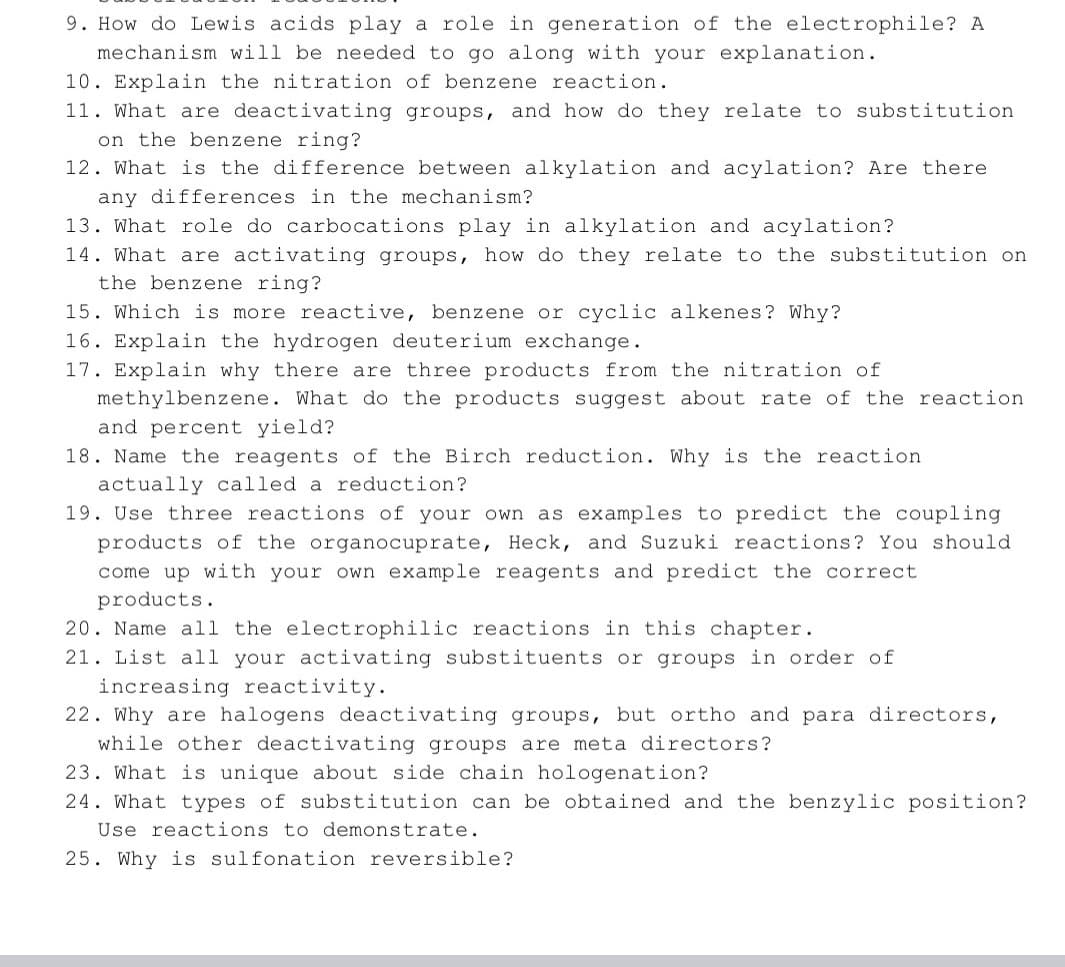Organic Chemistry: A Guided Inquiry
2nd Edition
ISBN:9780618974122
Author:Andrei Straumanis
Publisher:Andrei Straumanis
Chapter11: Addition To Alkynes
Section: Chapter Questions
Problem 4CTQ
Related questions
Question
15

Transcribed Image Text:9. How do Lewis acids play a role in generation of the electrophile? A
mechanism will be needed to go along with your explanation.
10. Explain the nitration of benzene reaction.
11. What are deactivating groups, and how do they relate to substitution
on the benzene ring?
12. What is the difference between alkylation and acylation? Are there
any differences in the mechanism?
13. What role do carbocations play in alkylation and acylation?
14. What are activating groups, how do they relate to the substitution on
the benzene ring?
15. Which is more reactive, benzene or cyclic alkenes? Why?
16. Explain the hydrogen deuterium exchange.
17. Explain why there are three products from the nitration of
methylbenzene. What do the products suggest about rate of the reaction
and percent yield?
18. Name the reagents of the Birch reduction. Why is the reaction
actually called a reduction?
19. Use three reactions of your own as examples to predict the coupling
products of the organocuprate, Heck, and Suzuki reactions? You should
come up with your own example reagents and predict the correct
products.
20. Name all the electrophilic reactions in this chapter.
21. List all your activating substituents or groups in order of
increasing reactivity.
22. Why are halogens deactivating groups, but ortho and para directors,
while other deactivating groups are meta directors?
23. What is unique about side chain hologenation?
24. What types of substitution can be obtained and the benzylic position?
Use reactions to demonstrate.
25. Why is sulfonation reversible?
Expert Solution
This question has been solved!
Explore an expertly crafted, step-by-step solution for a thorough understanding of key concepts.
Step by step
Solved in 5 steps

Knowledge Booster
Learn more about
Need a deep-dive on the concept behind this application? Look no further. Learn more about this topic, chemistry and related others by exploring similar questions and additional content below.Recommended textbooks for you

Organic Chemistry: A Guided Inquiry
Chemistry
ISBN:
9780618974122
Author:
Andrei Straumanis
Publisher:
Cengage Learning

Organic Chemistry: A Guided Inquiry
Chemistry
ISBN:
9780618974122
Author:
Andrei Straumanis
Publisher:
Cengage Learning